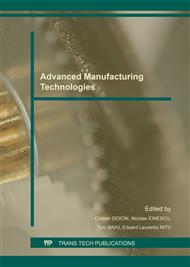p.9
p.15
p.22
p.28
p.34
p.43
p.49
p.55
p.61
Eco-Audit and Environmental Impacts of Products
Abstract:
Eco-audit is a tool to find the environmental impact of the product across all life cycle stages and for identify the problems in all aspects of a supply chain, from extraction of raw materials to manufacturing, distribution, use and disposal. The purpose of an analysis of a product is to establish the embodied energy, water usage, annual CO2 to atmosphere, carbon foot print, recycle fraction in current supply, toxicity, approximate processing energy and sustainability criteria. Knowledges to guide design decisions are needed to minimize or eliminate adverse eco-impacts. In eco-audit analysis, will be created material charts, processes selection and life cycle analysis allowing alternative design choices to meet the engineering requirements and reduce the environmental impact. The application presented in this paper uses only environmentally friendly properties of Ashby's database.
Info:
Periodical:
Pages:
34-39
Citation:
Online since:
April 2016
Authors:
Price:
Сopyright:
© 2016 Trans Tech Publications Ltd. All Rights Reserved
Share:
Citation:


